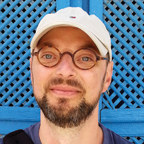Speed up Photo Transfers with Rapid Photo Downloader

Productivity Sauce
When you need to offload photos from a digital camera onto your computer, you can do this using the default browser, a photo management application, or a dedicated tool like Rapid Photo Downloader. Despite its name, transferring photos is only one of Rapid Photo Downloader's many talents. For starters, it can simultaneously download photos from multiple sources, so if your camera has two card slots, you can transfer photos from both of them in one go. More importantly, using Rapid Photo Downloader's preferences, you can configure the way the utility processes and sorts the downloaded photos. In the Download Folder section of the Preferences dialog window, you can specify the destination folder and define rules for organizing the downloaded photos into subfolders. For example, you can create a rule that moves photos taken on a specific date into a separate subfolder. This way the photos taken on October 19, 2009 are downloaded into the /2009/20091019 subfolder, while photos from November 1, 2009 are downloaded into the /2009/20091101 subfolder. Rapid Photo Downloader can also rename photos during download using user-defined rules. For example, using the rule shown in the figure below, Rapid Photo Downloader renames photos using the date and time information from the photo's EXIF metadata. So the utility replaces a meaningless file name like DSC_0023.JPG with 20091101-135533.JPG.
The Backup section lets you specify a destination directory where Rapid Photo Downloader will store backup copies of the downloaded photos. For example, you can specify an external USB storage device as the backup destination, and Rapid Photo Downloader will automatically back up the photos while downloading them from your camera.
Rapid Photo Downloader's Web site offers detailed instructions on how to install the application on different Linux distributions using binary packages. Alternatively, you can install Rapid Photo Downloader using the source distribution, and the INSTALL file supplied with the tarball archive provides a step-by-step guide on how to do this.
comments powered by DisqusSubscribe to our Linux Newsletters
Find Linux and Open Source Jobs
Subscribe to our ADMIN Newsletters
Support Our Work
Linux Magazine content is made possible with support from readers like you. Please consider contributing when you’ve found an article to be beneficial.

News
-
OpenMandriva Lx 6.0 Available for Installation
The latest release of OpenMandriva has arrived with a new kernel, an updated Plasma desktop, and a server edition.
-
TrueNAS 25.04 Arrives with Thousands of Changes
One of the most popular Linux-based NAS solutions has rolled out the latest edition, based on Ubuntu 25.04.
-
Fedora 42 Available with Two New Spins
The latest release from the Fedora Project includes the usual updates, a new kernel, an official KDE Plasma spin, and a new System76 spin.
-
So Long, ArcoLinux
The ArcoLinux distribution is the latest Linux distribution to shut down.
-
What Open Source Pros Look for in a Job Role
Learn what professionals in technical and non-technical roles say is most important when seeking a new position.
-
Asahi Linux Runs into Issues with M4 Support
Due to Apple Silicon changes, the Asahi Linux project is at odds with adding support for the M4 chips.
-
Plasma 6.3.4 Now Available
Although not a major release, Plasma 6.3.4 does fix some bugs and offer a subtle change for the Plasma sidebar.
-
Linux Kernel 6.15 First Release Candidate Now Available
Linux Torvalds has announced that the release candidate for the final release of the Linux 6.15 series is now available.
-
Akamai Will Host kernel.org
The organization dedicated to cloud-based solutions has agreed to host kernel.org to deliver long-term stability for the development team.
-
Linux Kernel 6.14 Released
The latest Linux kernel has arrived with extra Rust support and more.

